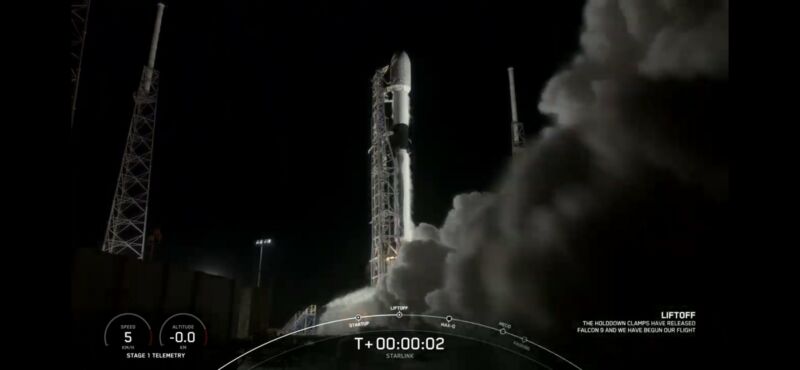
SpaceX crossed a significant milestone on Sunday morning with yet another launch of 60 Starlink Internet satellites.
These Starlink launches have become routine—and dare we say it, a little boring?—as SpaceX builds out its constellation to deliver broadband Internet around the world from low Earth orbit. However, the rate at which SpaceX has begun to reuse its Falcon 9 first stages is decidedly not monotonous.
For Sunday morning's launch, SpaceX used a first stage that had flown into space nine previous times. After this launch, the B1051 booster landed safely on a drone ship, completing its tenth flight to space. This is a notable milestone because, in 2018, SpaceX founder Elon Musk said the goal for its Falcon 9 rocket would be to fly each first stage booster 10 times before requiring significant maintenance.
Recently, Musk said the company has found no showstoppers as it flies Falcon 9 first stages more and more times. The company plans to continue to use these older rockets for Starlink missions, thus risking its own payloads in flight rather than those of a paying customer. Musk said the company has set no predetermined limit on the lifetime of a Falcon 9 rocket and that SpaceX would fly some of its Falcon 9 rockets to failure in an effort to identify these limits.
This particular first stage went to orbit for the first time on March 2, 2019, for the first demonstration mission for NASA's commercial crew program. During this flight, a Crew Dragon spacecraft docked with the International Space Station for about five days, paving the way for the first crewed flight in May 2020. This first stage has also been used to launch two commercial satellites and seven Starlink missions.
It is now approaching historic status. B1051 trails only NASA's Discovery, Atlantis, Columbia, and Endeavour space shuttle orbiters in terms of spaceflights. Three of those shuttles are now in museums. Columbia was lost in a fatal accident in 2003.
In flying 10 times since early March 2019, this single booster has now flown nearly as many missions as SpaceX's primary US launch competitor. Since the first flight of B1051, United Launch Alliance has flown a total of 11 missions with expendable rockets—two Delta IV launches, two Delta IV Heavy missions, and seven Atlas V rockets.
Thanks to its ability to reuse rockets, SpaceX has been able to increase its cadence of launches. This year in particular, the company has set a blistering pace. Through Sunday's launch, SpaceX has launched 14 orbital missions in 2021, 11 of which have been Starlink flights. That is an average of one launch every nine days, and those missions have been spread across just six different Falcon 9 first stages.
The company's next orbit launch, its 27th launch of operational Starlink satellites, could come as early as this Saturday from Kennedy Space Center, in Florida.
Article From & Read More ( A SpaceX booster now trails only 4 space shuttles in flight experience - Ars Technica )https://ift.tt/3vVNtRu
Science
No comments:
Post a Comment